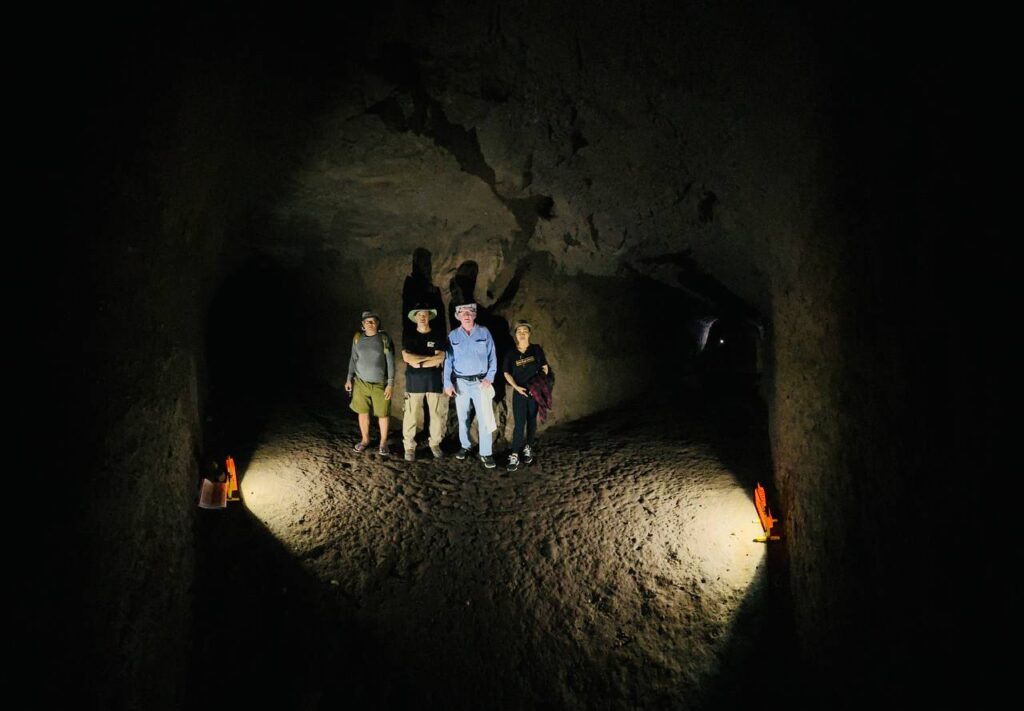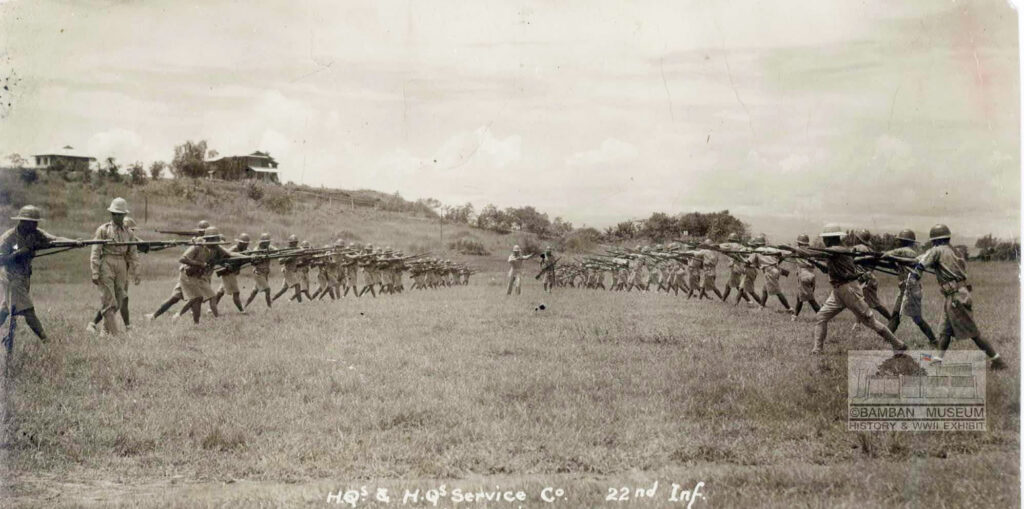
My town has more thing to offer other than POGO. Its role in our Nation’s history is marked by heroism and our struggle for Independence. Eighty years ago, the town of Bamban, Tarlac marked its role in the defense of our Country during WWII as it celebrated New Year in those looming days of the war. Our grandfathers; sons of Bamban who were at the height of their youth, heeded to the call to service for our Country in 1941 and joined the Commonwealth Army, particularly the 21st Division who would later be mobilized in the town to fight an invading army in their backyard.
BAMBAN AS USAFFE DEFENSE LINE NO. 5
On December 24, 1941, Major General Jonathan Wainwright in command of the North Luzon Force then mobilized in Lingayen to stop the impending Japanese landings and issued the order to move back the Filipino-American forces to Bataan in compliance to General Douglas MacArthur’s War Plan Orange No. 3 in a retrograde movement with five designated Defense Lines stretching from the town of Aguilar in Pangasinan to Bamban, Tarlac. The latter was designated as the last defense line extending to the western outlines of the Bamban Hills overlooking the highway to include the ridge of the Bamban Sugar Central, crossing the river (southern riverbanks of the Bamban) and thence to Mt. Arayat extending to Sibul Springs in northern Bulacan. The 21st Division Philippine Army under the command of Major General Mateo Capinpin with the 11th Division under Major General William E. Brougher were to moved south on the western flank using the old Highway Route 3 (present MacArthur Highway). It was intended that the Bamban Line will be held by the 21st and 11th Division while the South Luzon Force pass the road to Bataan at San Fernando, Pampanga. Bamban was also made the field Headquarters of the North Luzon Force by General Wainwright in December 12, 1941.
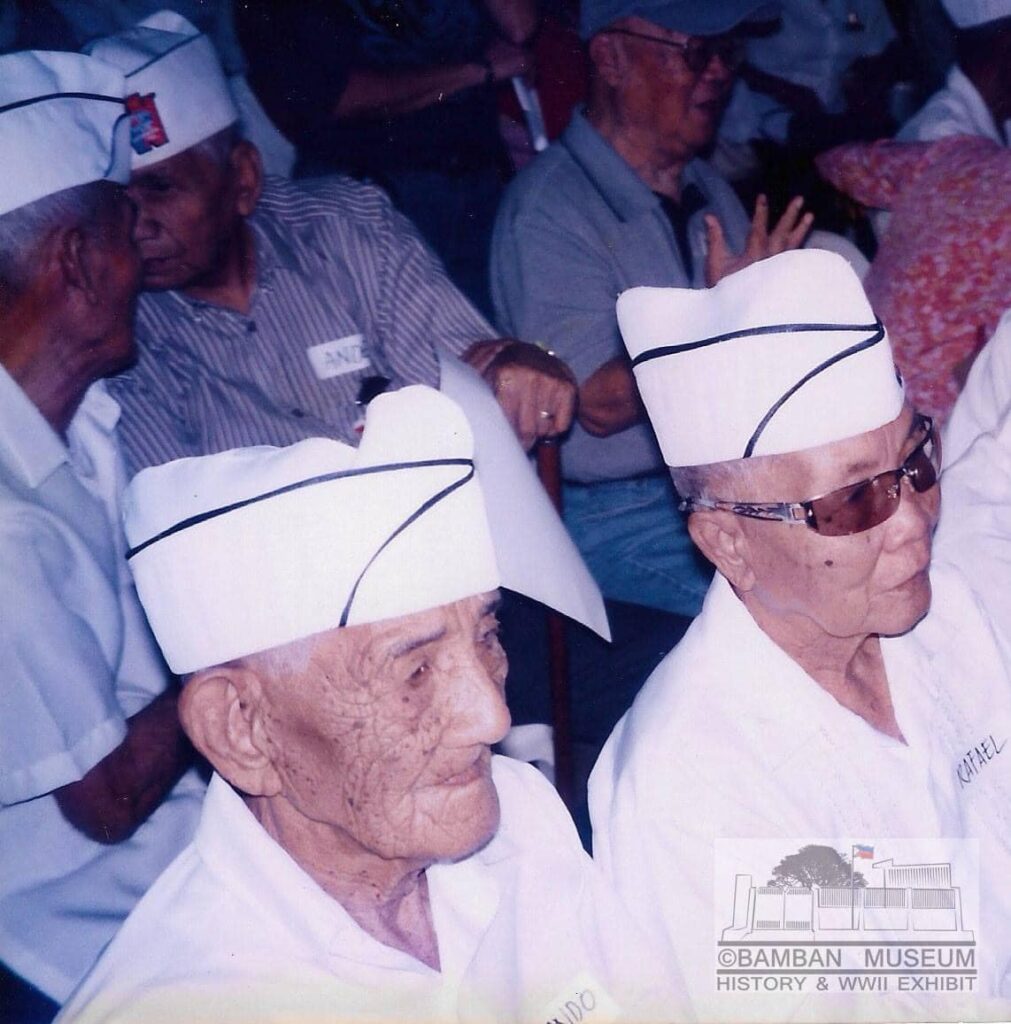
MOBILIZATION TO BAMBAN LINE: DECEMBER 30-31, 1941
From December 24 to December 28, the USAFFE Defense Line Nos. 1 to 4 were occupied by the North Luzon Force to slow down the Japanese Army’s advance towards the south. At the D-4 Line in Tarlac and Cabanatuan, the main Japanese forces that included tanks, infantry and cavalry engaged the valiant troops of the 91st Division and 21st Division; forcing General Wainwright to issue the order to move to Bamban Line on the night of December 30 and 31, 1941. The 26th Cavalry (PS) passed the road at Bamban where some of its townsfolk; Dominador Rongero and Melencio Figueroa of Troop B where able to check their families on their way to Porac. Bamban, a peaceful town of more than 6,000 people famous for its industrial base of the Central Luzon Milling Corporation (Bamban Sugar Central) located on the southern edge near the bridge was engulfed with the coming of the of thousands battered troops of the 21st Division where several of its infantry units will be posted on strategic locations along the banks of the shallow Bamban River in about 18 kilometer length.
BAMBAN BRIDGES
Of particular importance on the road south was the high multiple four spans Bamban Railroad Bridge, raised 30 feet high above the ground level of the Bamban riverbanks supported by iron cylinders and 350 feet long that connects Tarlac and Pampanga provinces along the Manila-Dagupan Rail Line. The vehicular bridge was typical of its design in those days wand was constructed during the American Period. Both bridges run parallel and separated by less than a hundred meters over the Paruao (Bamban) River. The Bantiti Hill-mass and the Bamban Sugar Central Mansion Ridge located north and northwest of the bridges provides strategic lookout for the defense of the entrances to the area.
The Filipino-American Artillery Forces at Bamban Line
With the infantry posted on both sides of the Bamban Bridge with the Bantiti Hills to the west and Lafe Hill to the south, 21st Division Artillery consisting of the 37mm anti-tank gun and a battery of self-propelled 155mm artillery were in position to provide the necessary firepower to protect the North Luzon Force at Bamban Line. The 21st Division Artillery was posted behind this line on the side of Mabalacat with its First Battalion near the river; the Second Battalion in the vicinity of the Dona Africa Hill east of Mabalacat and the Third Battalion near the old Barrio Dolores (now part of the Mabalacat Picnic Ground area). Aside from the 21st Division Artillery under Col. Nemesio Catalan, elements of the Provisional Field Artillery (Self-Propelled Mounts), with its Fifth Field Battery, Third Provisional Battalion armed with French 75-mm gun mounted on half-track scout car were also posted on the Bamban Line during the withdrawal from Tarlac D-4 Line.
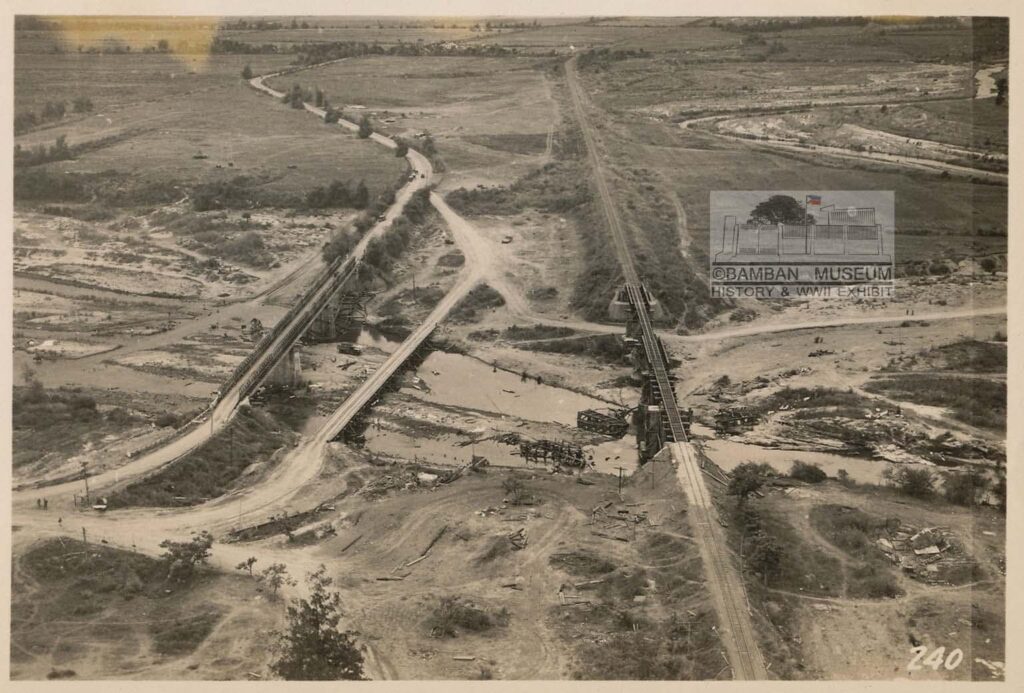
THE 21ST INFANTRY DIVISION PHILIPPINE ARMY IN BAMBAN
Mobilizations of the 21st Division PA units to Bamban Line was not a smooth sailing, as the remaining troops of the battered First Battalion of the 21st Infantry were left stranded on the northern banks of the Bamban River after unloading by Pambusco buses coming out of the stiff fights in Carmen, Pangasinan. Second and Third Battalion of the 21st Infantry were also mobilized to provide infantry force in the Bamban Line near the bridge surroundings. The national highway known then as Route 3 was guarded by the 22nd Infantry under the command of Major Jose Aglamag. The entrance of the Bamban Bridge was likewise fortified with the installation of Special Combat Team of Company C (commanded by Major Espiritu), 23rd Infantry Regiment on the high ground north of the Bamban River on what is now the Mansion Ridge of the Bamban Sugar Central to provide infantry fire on the dominating grounds overlooking both vehicular and railroad bridges.

JAPANESE FORCES AGAINST BAMBAN LINE
With the outcome of the engagements with the 21st Division at Tarlac, the main body of the Japanese Imperial Army was the Kanno Detachment (with Col. Kanno in command) that came from Zaragosa (Nueva Ecija) debacle the previous days. The 9th Infantry who fought in Tarlac D-4 Line (its commanding officer, Col. Kamijima was killed during the battle) would provide infantry support for the Bamban Operations. The 8th Field Artillery (less one battalion), two batteries of the 22nd Field Artillery and a battalion of the 48th Mountain Artillery were tasked to provide artillery firepower in support of the operations and against the 21st Division Artillery. The Japanese Fifth Fighter Group was tasked to provide the necessary air support against the D-5 Line in Bamban after successive air operations in Tarlac Line.
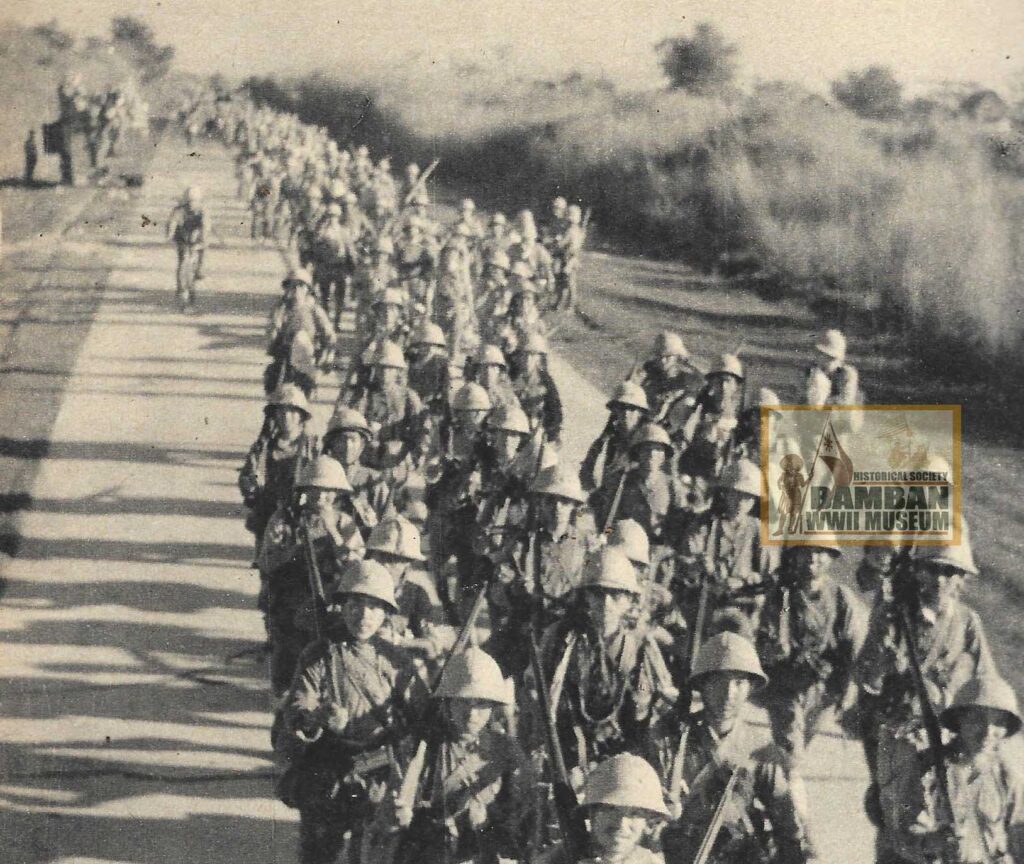
DEMOLITION WORKS AT BAMBAN BRIDGE; DECEMBER 31, 1941
On the evening of December 31, 1941, elements of General Capinpin’s 21st Division dynamited portion of the Bamban Bridge to prevent its use by the Japanese particularly tanks and other military vehicles. Prior moving to Bamban Line, the 21st demolition crew were in charge of dynamiting bridges at Tarlac. Avelino Tuazon from Bamban was among the personnel of the Engineering Unit that conducted the demolition of the bridge as the North Luzon Force retreated south. Preparations for the defense of the Bamban Bridge was carried out with forward machine gun nests on the high ground overlooking the bridges, both sides of the entrances and inside the bridge, aside from the infantry units positioned in the vicinity with the artillery at the rear.
FIGHTING IN THE BACKYARD; PRIVATE RAFAEL YABUT & AMBUSH OF JAPANESE RECON TROOPS
As the town fell quiet on the night of December 31, 1941, the Japanese Imperial Army advance troops from the Kanno Detachment mounted in bicycles appeared in the north along the highway. By 10 p.m., as they move into the bridge entrance, volleys of rifles and machine gun fire ripped into the advance company of Japanese troops where the unit was annihilated in a successful ambush by the forward positions of Company C, 23rd Infantry. Among the troops of the 23rd Infantry was Private Rafael Yabut of Bamban who enlisted in the 21st Division along with other teenagers from the town during the general mobilization several months prior the outbreak of WWII.
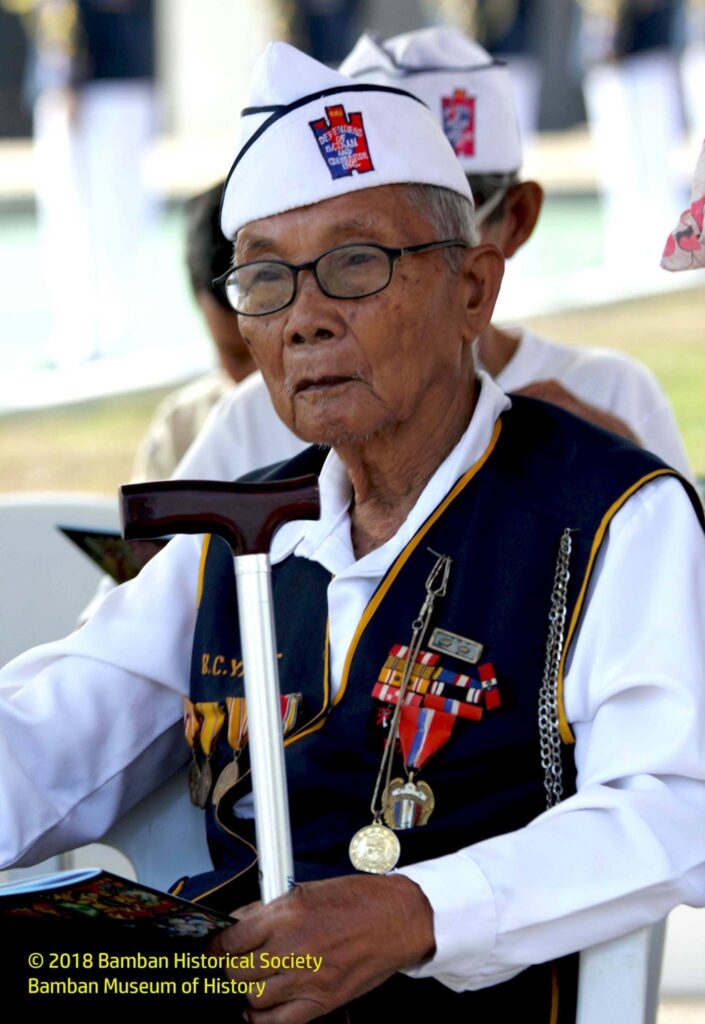
DEATH OF LT. GREGORIO L. DE GRACIA IN THE DEFENSE OF BAMBAN BRIDGE
After the successful ambuscades of the first Japanese advance troops at the Bamban Bridge, another Japanese infantry force of company-size in strength was mobilized to capture the important bridge facility. Lt. Gregorio L. De Grace commanded a machine gun platoon unit and was emplaced inside the bridge to counter any enemy crossing. At 1:30 a.m., the main Japanese Recon Troops moved into the entrance of the Bamban and a stiff encounter ensued with Lt. De Gracia’s machine gun platoon as well as the other infantry positions that provided fire support against the enemy. The Japanese Kanno advance troopers were killed in an attempt to capture the strategic bridge while Lt. De Gracia was killed in the engagement; becoming the first officer casualty of the 21st Division during the Defense of Luzon.
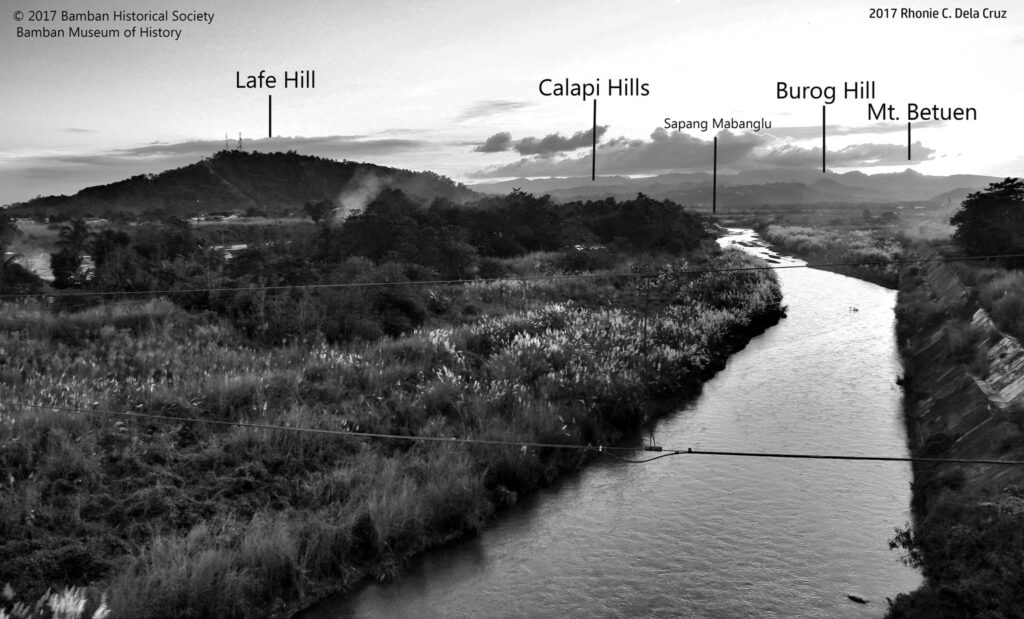
THE DEFENSE OF BAMBAN LINE ON NEW YEAR 1942
As the first light of the day in 1942 appeared, the Japanese main body of the Kanno Detachment mobilized in full force to break the Bamban Line. Japanese dive-bombers conducted air operations against the 21st Division infantry positions along the riverbanks while the guns of the Japanese field artillery units poured heavy shells on the southern banks of the Bamban. The 21st Division Artillery provided counter battery fire on the Japanese infantry positions located on the north of the town. The guns of the 48th, 22nd and 8th Field Artillery in support of the Kanno Detachment in Bamban were busy firing on the Filipino defenders of the Bamban Line for almost three-hour long artillery bombardment. Tanks in support of the infantry appeared and tried to cross the ankle-deep Bamban River. The 21st Division Artillery anti-tank unit and the American Third Battalion of the Provisional Field Artillery (SMP) were quick to engaged and opened up their guns on the Japanese tanks during the river crossing that destroyed them. At the same time, the Filipino-American artillery force fired their guns on the thousands of Japanese troops of the Kanno Detachment reinforced by the 9th Infantry located on the north side of the riverbanks of the Bamban where hundreds of bodies littered the areas. The Defenders of Bamban Line held their positions even in the face of artillery, infantry, tanks and aerial bombardment. By late afternoon, the order was issued by General Capinpin to start moving out of the Bamban Line. Late in the evening, the main body of the 21st Division in Bamban finally retreated out of the USAFFE Defense Line No. 5 and settled in position southwest of Porac for another delaying actions.
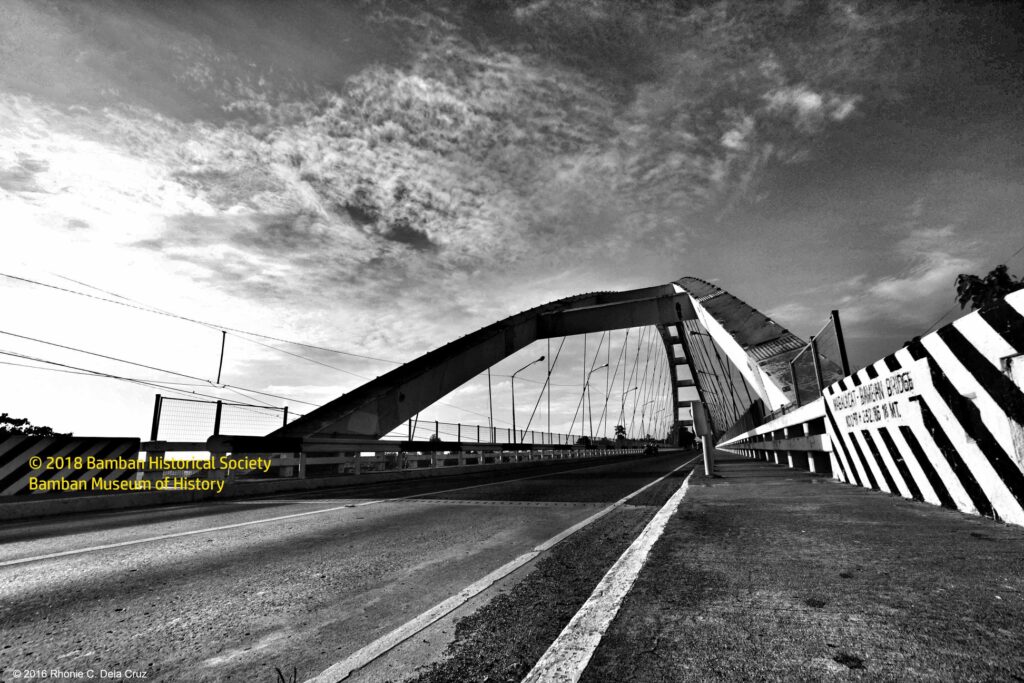
EPITAPH FOR THE MEMORY OF THE GALLANT STAND AT BAMBAN LINE
The Defenders of D-5 Line in Bamban were composed of the officers and men of the 21st Division and the artillery units mentioned that concluded the gallant stand on Bamban Bridge and the line in the riverbanks on the New Year of 1942 must not be forgotten. The fight was one of the successful engagements conducted by the Philippine Army during the early days of WWII in the Philippines. By holding the Bamban Line by our heroic defenders, North and South Luzon Force was able to slip into Bataan via the San Fernando and Porac Roads that paved the way for further preparations of the defense of Bataan.
IN MEMORIAM
Among the Defenders of the 21st Division were from Bamban; their deeds and sacrifices may not be forgotten in the annals of our WWII history of this town
Eduardo Navarro
Rafael Yabut
Fernando Quiambao
Alejandro de Guzman
Alejandro Cadiang
Venerando Halili
Ciriaco Maristela
Sergio Noces
Rodolfo Vergara
PROPOSED 21ST DIVISION MEMORIAL AND MARKER AT BAMBAN BRIDGE
It is by us the living that we should not forget the legacy of heroism of our town’s WWII Heroes and the battle they participated and that a memorial to their gallantry should be established that their story shall me perpetually recognized and given importance that would give inspirations for the generations of Bambanenses and to instill love of Country and respect to our local veterans. Bamban Historical Society, as early as 2000 already made technical plans and drawings for the establishment of the 21st Division Memorial and the marker for the Defense of Bamban USAFFE D-5 Line near the present Bamban Bridge to honor the gallant stand of the 21st Division with the American instructors and the Provisional Field
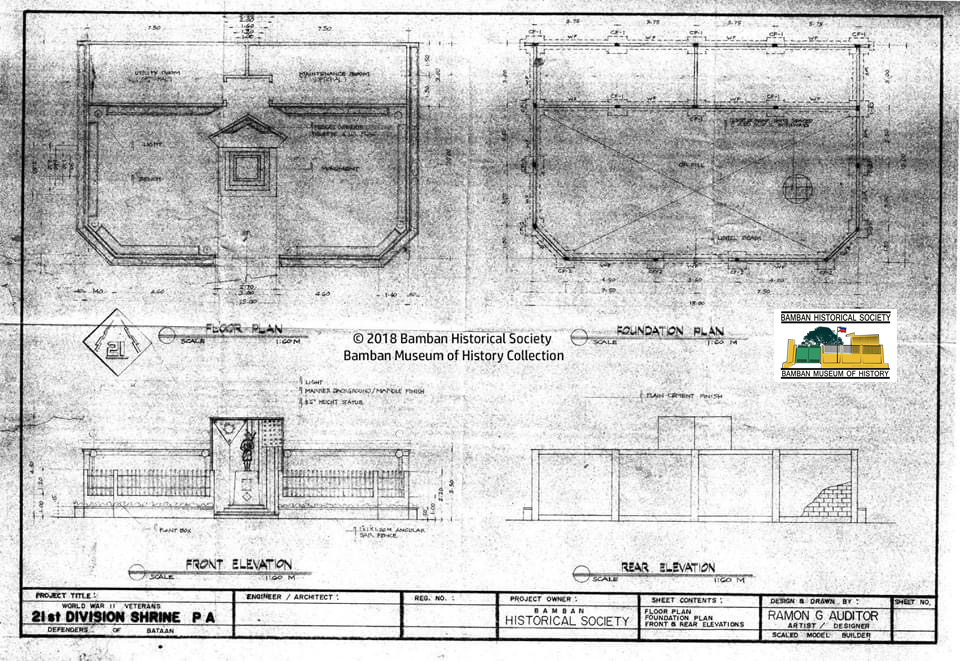
Artillery.
So, every December 31 and New Year, with the noise of the firecrackers as we welcome the coming of days, may we also remember the Defense of Bamban Line and our gallant soldiers who kept the fighting in the face of overwhelming enemy forces during WWII. In their memory.
RHONIE DELA CRUZ
Bamban Historical Society
Bamban Museum of History
Center for Pacific War Studies
BIBLIOGRAPHY
(1) Morton, Louis. US Army in WWII The War in the Pacific – The Fall of the Philippines. Commemorative edition. Center for Military History, United States Army: Washington DC, 1989.
(2) Stevens, Peter F. The Twilight Riders – The Last Charge of the 26th Cavalry. Connecticut: Lyons Press, 2011.
(3) Dioso, Marconi M. The Times When Men Must Die: The Story of the Destruction of the Philippine Army During the Early Months of World War II in the Pacific, December 1941-May 1942. Dorrence Publishing Company, 2010.
(4) Mallonee, Richard III. The Naked Flagpole – Battle for Bataan (From the diary of Richard C. Mallonee). San Rafael, California: Presidio Press, 1980.
(5) Reed, George R., The 3rd Field Artillery Battalion (Provisional) in the Philippines 1941-1942. US National Archives, Washington DC, 1948.
Interview
(1) Tuazon, Oscar. Interview by the author via online related to his father Avelino Tuazon who has taken part in the demolition works at Bamban Bridge on December 31, 1941, August 2, 2018.
(2) Yabut, Rafael. Interview by the author related to his exploits with the 23rd Infantry. Lourdes – Dapdap, Bamban, Tarlac, April 6, 2018.
PHOTOS:
(a) Photo of Rafael Yabut and Fernando Quiambao from Bamban, both served with the 21st Division PA at the Bamban Line on December 31, 1941 and January 1, 1942.
Bamban Historical Society Collection.
(b) Aerial photo of Bamban Bridges with the Paruao River. The site became part of the main defenses of the Bamban USAFFE D-5 Line.
40th Division US Army Photo, US NARA courtesy of Karon Thomas.
(c) Portrait of Major General Mateo Capinpin, Commanding General of the 21st Division PA during the defense of Bamban Line.
Photo by the Philippine Scouts Heritage Society.
(d) Soldiers of the 22nd Infantry Regiment, 21st Division PA during training exercise at nearby Camp James Ord (presently Camp Aquino), circa September 1941.
Credit to the owner of the photo.
(e) View of the railroad and vehicular bridges of the Bamban where the fighting took place during the defense of Bamban Line. Photo taken in February 1945.
US National Archives Photo. Bamban Historical Society Collection
(f) Map of the USAFFE Defense Lines with Bamban marked in the sector of the D-5 Line.
From: Louis Morton, The Fall of the Philippines.
(g) Portrait of Rafael Yabut, 23rd Regiment, 21st Division P.A.
Rhonie Dela Cruz photo.
(h) Photo of the present Bamban Bridge.
Rhonie Dela Cruz photo.
(i) View of the south of the Bamban Bridge, where the Bamban River flows and site of the Bamban River Line of the USAFFE D-5.
Rhonie Dela Cruz photo.


